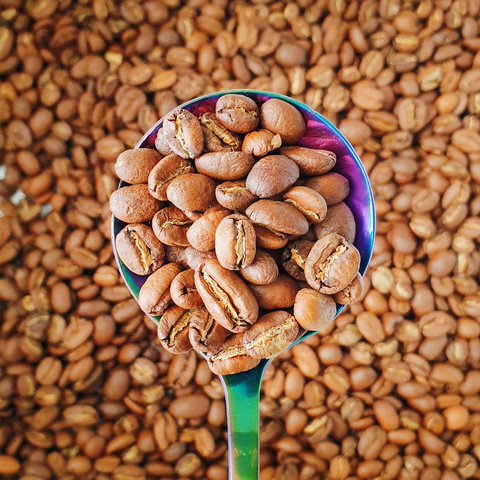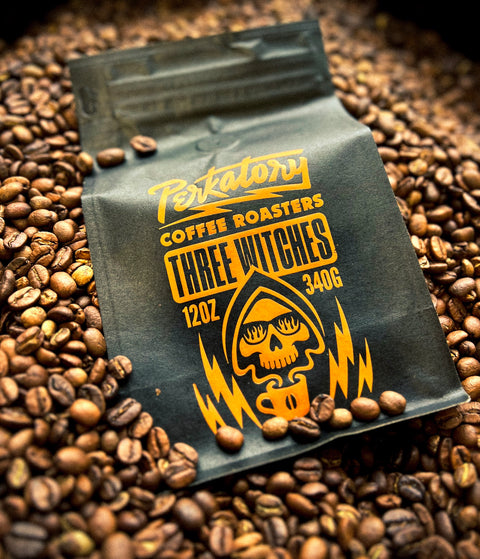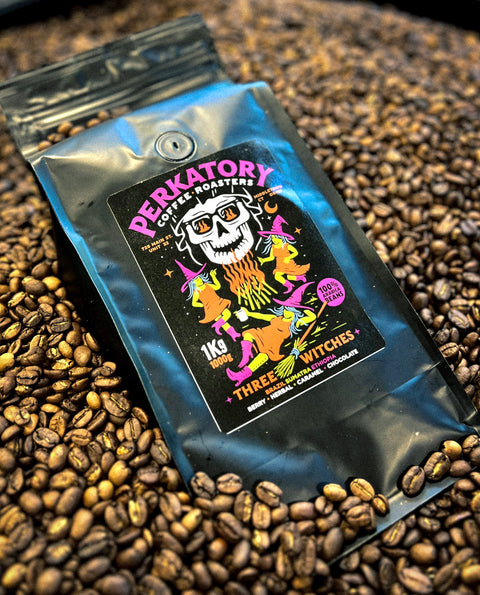Introduction: Discovering Light Roast Coffee
In the diverse spectrum of coffee roasts, from dark to medium, light roast coffee holds a special place. Known for its bright acidity and complex flavor profiles, light roast coffee is celebrated for its ability to retain the original essence and fruity notes of the coffee beans. This guide delves deep into what makes light roast coffee, also referred to as “light roasted coffees” or “light roasts,” a distinct and beloved choice among specialty coffee roasters and enthusiasts alike. Specifically, light roast coffee beans are lauded for their ambrosial notes of honey and citrus with a super silky body, debunking the myth that they retain more caffeine than their darker counterparts and clarifying the truth about caffeine content in light roast vs. dark roast.
What Defines Light Roast Coffee
Light roast coffee, recognized by its light brown color and a surface free from oil, is coffee that has been roasted to reach an internal temperature between 356°F to 401°F. Light roast coffees are celebrated for their brighter, sweeter, and more vibrant qualities, which distinguish them from darker roasts. This roasting process stops right after the first significant crack, allowing the beans to expand and develop their flavor without reaching the oil-release stage seen in darker roasts. The specific attributes of light roasted coffee, such as its unique flavor profile, acidity, and the preservation of natural flavors, highlight the meticulous process of roasting coffee to achieve these distinctive characteristics.
Comparing Roast Profiles: Light, Medium, and Dark
Unlike light roast, which highlights the inherent flavors of the coffee bean, dark roast coffee undergoes a longer roasting process that imparts a bold, dark chocolate flavor and often a dark brown or nearly black color. These “dark roasts” tend to lose some caffeine content and density due to their extended exposure to heat. Medium roast coffee strikes a balance, offering a flavor profile that is less acidic than light roasts but not as robust as dark roast coffees. Interestingly, when comparing the caffeine content between light and dark roast beans, measuring by weight shows roughly the same caffeine levels for both. However, due to the higher density of light roast beans, measuring by volume may result in more caffeine in light roasts compared to dark roast beans.
The Journey from Green Coffee Beans to Roasted Perfection
The path to creating the perfect cup of light roast coffee begins with green coffee beans. These raw seeds from coffee cherries are carefully transformed through the coffee roasting process, where they develop a spectrum of flavors from fruity to floral, depending on the roast level and origin. Light roasted coffee, in particular, is celebrated for its unique flavor profile and higher caffeine content, which are direct results of the light roasting process that preserves the vibrant and unique flavors associated with specialty coffee. Coffee roasters play a pivotal role in this process, applying their expertise to maintain the integrity and unique characteristics of each coffee bean.
Brewing Methods for Light Roast Coffee
To best appreciate the delicate nuances of light roast coffee, selecting the appropriate brewing method is crucial. Popular methods include the French press, drip coffee, and pour-over—each capable of extracting different qualities from the coffee. For example, the pour-over method accentuates the coffee's bright acidity and fruity flavors, making it ideal for light roasted coffees.
Flavor Profile: Acidity, Caffeine, and Aromas
Light roast coffee is renowned for its vibrant flavor profile, characterized by high acidity and pronounced floral and fruity notes. Contrary to popular belief, light roasts can contain slightly more caffeine than darker roasts, as the shorter roasting process preserves more of the coffee's natural caffeine.
Selecting the Best Light Roast Coffee
When choosing light roast beans, freshness is key. Opt for beans that have been recently roasted to experience the full spectrum of flavors. The origin also plays a crucial role; for instance, African coffees like those from Ethiopia or Kenya are known for their floral and fruity complexity, whereas Central American coffees might offer a cleaner, more balanced profile.
Cultural Significance and Trends in Light Roasting
The preference for light roast coffee reflects a broader trend towards appreciating the intrinsic qualities of coffee beans. This trend is particularly prominent among modern coffee drinkers who value transparency and the skill of specialty coffee roasters in bringing out the bean's natural flavors.
FAQs About Light Roast Coffee
- Does light roast coffee have more caffeine than dark roast? Yes, light roast coffee typically contains slightly more caffeine than dark roast because the roasting process is shorter, preserving more of the caffeine originally found in the coffee beans.
- What makes light roast coffee different from medium or dark roast? Light roast coffee is roasted for a shorter time, which preserves the bean's natural flavors, resulting in a coffee with higher acidity and more pronounced floral and fruity notes compared to medium and dark roasts.
- How should I brew light roast coffee to best capture its flavors? Light roast coffee is best brewed using methods that allow for controlled temperature and brewing time, such as pour-over, French press, or drip coffee, to fully capture its unique flavor profile.
- Can I use light roast coffee for espresso? While traditional espresso is often made with darker roasts, light roast coffee can also be used for espresso to create a brighter, more acidic shot with distinct flavor nuances.
- How do I store light roast coffee to maintain its freshness? Store light roast coffee in an airtight container away from direct sunlight and moisture. It's best consumed within a few weeks of roasting to enjoy its full flavor.
Conclusion
Light roast coffee offers a unique and enriching experience for those who appreciate the subtleties of coffee flavors. With its bright acidity, lighter body, and captivating aroma, light roast coffee is not just a beverage but a journey into the art and science of coffee roasting. Whether you're a seasoned coffee enthusiast or new to the world of specialty coffees, exploring light roasts can transform your coffee routine with every cup offering a fresh perspective on this beloved global beverage.



